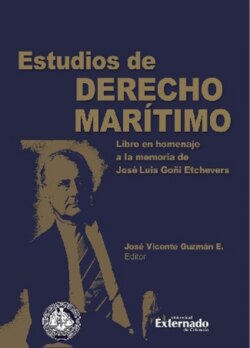Читать книгу Estudios de derecho marítimo. Libro en homenaje a la memoria de José Luis Goñi Etchevers - José Carlos Fernández Rozas - Страница 35
На сайте Литреса книга снята с продажи.
II. HISTORY
ОглавлениеSalvage is one of the classic subjects in maritime law.
It started to be fully regulated not long ago, namely with the turning of navigation from sailing into steamship.
Previously the issue was not much that of setting provisions to apply when a vessel was in distress, but rather of protecting the shipwrecked persons and their belongings. This was the trend in Roman law, which also provided punishment of wrongdoings that caused a shipwreck and prevented salvage of a vessel in danger.
The position totally changed in the Middle Age, when the law (jus naufragII) entitled the riparian feudatories to seize the shipwrecked persons and their belongings.
The Roman Pontiffs then intervened and condemned such medieval custom with excommunication and with Papal Bulls allowing salvage also of non-catholic shipwrecked persons.
Directions on the administration of justice and the prohibition of the pillage of shipwrecks were contained in the Rôles d’Oléron, a Code of 1152 under the promotion of the Queen of England Aliénor d’Aquitaine.
With the abolition of “jus naufragII”, standards started to be established regarding the duty to perform salvage of the shipwrecked persons and remuneration was granted as an encouragement.
Provisions on salvage were contained in the French Ordonnance de la Marine of 1681, which was followed by the Ordenanzas del Consulado de Bilbao of 1737, whilst the Kingdom of Sardinia included salvage in its Regulations on Merchant Marine of 9 March of 1816, then amended by the Regulations of 13 January 1827.
Rules on salvage of property were established in the Spanish Códigos de Comercio of 1829 and 1885, whilst a detailed set of clauses on salvage, contemplating inter alia that the reward was not to exceed the 10% of the salved value, was contained in the 1865 Code of Merchant Marine of the Kingdom of Italy, and in the subsequent Code of Merchant Marine of 1877.1
The first international instrument on salvage is the Brussels Convention of 23 September 19102, to which Spain acceded the 17 November 1923, whilst Italy ratified it the 2 June 1913.
At that time Spanish legislation on salvage was contained in the Titulo Adicional de la Ley de Enjuiciamiento Militar de la Marina of 10 July 1925, which was applicable to vessels flying the Spanish flag, with the 1910 Salvage Convention applying when a foreign flag vessel was involved.
As to Italy, the provisions of the 1910 Salvage Convention were substantially reproduced in Law 14 June 1925 n. 938, which was then substituted by the Code of Navigation, approved with Royal Decree 30 March 1942, n. 327.
The relevant section of the Code is titled “Assistance and Salvage”.
In the 1910 Salvage Convention such distinction is only linguistic3. However, there is no difference as to the assessment of the reward and its amount.
The desire of the Italian Legislator was to similarly avoid any difference but, in describing the nature of assistance and salvage in arts. 489 and 490 of the Code of Navigation, things got complicated.4
Fortunately, Italian Courts first made it clear that the difference is only terminological, stating that assistance is the service rendered with the cooperation of the vessel in danger5, and then holding that the rules on assistance and salvage in the Code of Navigation are part of an unitary system, with the consequence that qualifying the services as assistance or salvage is irrelevant in respect of the entitlement to a reward6.
Back to Spain, a full set of rules on salvage was contained in Ley 60/1962 of 24 December and in the subsequent implementing regulations of Decree n. 984 of 20 April 1967, then amended by Decree n. 2993 of 28 November 1968.
